12 November
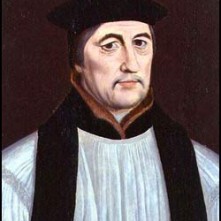
Stephen Gardiner
1532 – Henry VIII and Anne Boleyn finally left Calais after being delayed by a Channel fog. They landed at Dover on Thursday 14th November. They had been visiting Calais to meet with the French king, Francis I.
1537 – Jane Seymour’s body was taken by chariot from Hampton Court Palace to Windsor Castle. Click here for more information.
1554 – The opening of Mary I’s third Parliament. At this Parliament, a bill was passed allowing the exiled Cardinal Reginald Pole to return to England as papal legate.
1555 – Mary I's Parliament re-established Catholicism in England.
1555 - Stephen Gardiner, Bishop of Winchester and Mary I’s Lord Chancellor, died. Gardiner crowned Mary I Queen of England at her coronation at Westminster Abbey on the 1st October 1553, and helped Mary to restore Catholicism and overturn the annulment of her parents’ marriage, making her legitimate. He was also instrumental in the marriage negotiations between Mary and Philip II of Spain, and married the couple at Winchester Cathedral on the 25th July 1554. He was laid to rest at Winchester Cathedral in what is now known as the Bishop Gardiner Chantry Chapel.
1576 – Death of Sir Edward Saunders, judge. He was buried at Weston under Wetherley, Warwickshire. Saunders' offices included Serjeant-at-Law, Recorder of Coventry, Chief Justice of the King's Bench and Chief Baron of the Exchequer.
1586 – A delegation of forty MPs and twenty peers presented Elizabeth I with a petition demanding that “a just sentence might be followed by as just an execution” in the case of Mary, Queen of Scots.
1595 – Death of Sir John Hawkins, merchant, shipbuilder, navigator, explorer, slave trader and naval commander, at Puerto Rico on a voyage, with Sir Francis Drake, which aimed to capture Panama. He was buried at sea. Hawkins is known for being the chief architect of Elizabeth I's navy, and he was knighted for gallantry after serving as Vice-Admiral during the Spanish Armada.
13 November
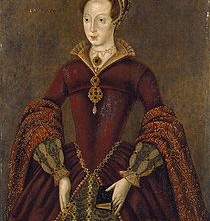
Woman thought to be Lady Jane Grey
1536 – Murder of Robert Pakington, mercer and member of Parliament, at Cheapside, while making his way to mass at St Thomas of Acre Chapel. Click here to read more.
1537 – Burial of Jane Seymour, Henry VIII's third wife, at St George's Chapel, Windsor Castle. Henry VIII's daughter, Mary, acted as chief mourner. Click here to read more.
1537 - Margaret Tudor, former Queen of Scotland, wrote to her brother, Henry VIII, seeking his help. Click here to read more about this.
1553 - Lady Jane Grey, her husband Guildford Dudley, his brothers Ambrose and Henry, and Archbishop Thomas Cranmer were tried for treason at a public trial at London’s Guildhall. They were all found guilty as charged, with the men being sentenced to being hanged, drawn and quartered, and Jane to be burned alive, or beheaded.
1601 – Burial of Lady Mary Ramsey (née Dale), famous philanthropist, at Christ Church in London.
1612 – Death of Sir George Carew, administrator, member of Parliament and diplomat, from typhus at his home in Tothill Street, Westminster, London. He was buried at St Margaret's Church, Westminster. Carew's served as secretary to Lord Chancellor Hatton and served Elizabeth I and James I as an ambassador.
14 November
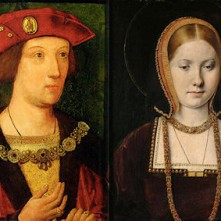
Arthur Tudor and Catherine of Aragon
1501 - Catherine of Aragon married Arthur, Prince of Wales at St Paul’s Cathedral.
1531 – Birth of Richard Topcliffe, member of Parliament, priest-hunter, interrogator and torturer, in Lincolnshire. During the reign of Elizabeth I, Topcliffe was issued with warrants allowing him to use torture when examining imprisoned Catholic recusants and priests. His famous victims included Robert Southwell, John Gerard and Henry Garnet.
1532 - On this day in 1532, according to the chronicler Edward Hall, Henry VIII and Anne Boleyn secretly married: “The kyng, after his returne [from Calais] maried priuily[privily] the lady Anne Bulleyn on sainet Erkenwaldes daie, whiche mariage was kept so secrete, that very fewe knewe it, til she was greate with child, at Easter after.”
1539 – Hanging of Hugh Cook (Faringdon), Abbot of Reading, for treason, for upholding papal supremacy. He was born Hugh Cook, but took the name Faringdon when he took Benedictine orders.
1541 – An inventory was taken “of the goods and chattels, lands and fees of Thos. Culpeper, the younger”, the alleged lover of Queen Catherine Howard.
1559 – Death of Thomas Brydges, landowner, member of Parliament and administrator. He was buried at Chadlington in Oxfordshire. Brydges had been present at the execution of Lady Jane Grey while serving as Deputy Lieutenant of the Tower of London.
1581 – Death of Richard Bristow, Roman Catholic priest and scholar, while in prison for his faith. He died of consumption. Bristow is known for being one of the men responsible for the translation of the Douay-Rheims Bible.
15 November
1527 – Death of Katherine, Countess of Devon (also known as Katherine of York) at Tiverton Castle, She was aged forty-nine. She was buried at St Peter's Church, Tiverton, in funeral ceremonies on 2nd and 3rd December. Katherine had taken a vow of chastity after the death of her husband William Courtenay, Earl of Devon, in 1511. Katherine was the sixth daughter and ninth child of King Edward IV and Elizabeth Woodville. Her sister, Elizabeth of York, had married Henry VII, so Katherine was aunt to Henry VIII.
1555 – Death of Robert Holgate, former Bishop of Llandaff and then Archbishop of York, in London. He was buried at St Sepulchre. Holgate was imprisoned for a time during the reign of Mary I for being married, but was released when he renounced his marriage in his “Apology”.
1592 – Burial of Sir Thomas Cokayne, soldier, huntsman and author of “A Short Treatise of Hunting” (1591), at Ashbourne church in Derbyshire. Cokayne attended Mary, Queen of Scots on her journey to Fotheringhay in 1587, and helped found Ashbourne Grammar School.
1597 – Death of Robert Bowes, member of Parliament and Elizabeth I's English Ambassador in Scotland, at Berwick. He was buried at Berwick on the 16th November.
16 November
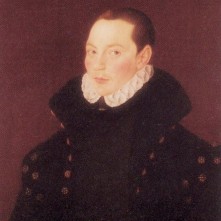
Sir Francis Willoughby
1531 – Death of John Batmanson, prior of the London Charterhouse, at the Charterhouse. He was buried in the cemetery there. Batmanson is said to have written treatises against the works of Martin Luther and Jacques Lefèvre d'Étaples, and he also criticised Erasmus.
1585 – Death of Gerald Fitzgerald, 11th Earl of Kildare and an Irish peer, in London. His body was taken to Kildare and buried there in February 1586. Fitzgerald was created Earl of Kildare and Baron of Offaly after helping put down Wyatt's Rebellion in 1554. He was imprisoned in the Tower of London twice for treason (1575 and 1582), but was cleared both times.
1596 – Death of Sir Francis Willoughby, industrialist and coalowner, in London. He was buried at St Giles Cripplegate. Willoughby is known for building Wollaton Hall in Nottinghamshire, developing coal mines on the estate, growing and processing woad there and in Ireland, and establishing two blast furnaces, for iron, at Middleton and Oakamoor, in Staffordshire, and buying one at Codnor in Derbyshire.
1601 – Death of Charles Neville, 6th Earl of Westmorland, nobleman and rebel, at Nieuwpoort in Flanders, while in exile. With the Percy family, the Nevilles had led the Rising of the North, a plot to release Mary, Queen of Scots and overthrow Elizabeth I. When the plot failed, Neville fled to Scotland and then on to Flanders. He was also involved in the Ridolfi Plot against Elizabeth.
1612 – Death of William Stafford, conspirator. Stafford was the son of William Stafford, widower of Mary Boleyn, and his second wife, Dorothy. Stafford was imprisoned in the Tower of London after being implicated in the plot of Baron de Châteauneuf, the French ambassador, to kill Elizabeth I. It is speculated that the plot was actually orchestrated by Walsingham and Cecil to show Elizabeth I that her life was in danger, and to persuade her to act against Mary, Queen of Scots. No charges were brought against Stafford, and he was released in 1588.
17 November
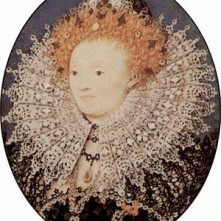
Elizabeth I
1493 – Birth of John Neville, 3rd Baron Latimer. He was the eldest son of Richard Neville, 2nd Baron Latimer, and his wife, Anne (née Stafford), and he was the brother of the poet William Neville. Latimer was married three times: Dorothy de Vere, sister of John de Vere, 14th Earl of Oxford; Elizabeth Musgrave, daughter of Sir Edward Musgrave; and Catherine Parr (the future Queen Catherine Parr), daughter of Sir Thomas Parr of Kendal and the widow of Edward Borough. Latimer died in March 1543 and his widow, Catherine Parr, married Henry VIII in July 1543.
1525 – Death of Sir John Fyneux, Judge and Chief Justice of the King's Bench. He was appointed Chief Justice in 1495, and was also an executor of Henry VII's will.
1551 – Death of Richard Fermor, wool merchant, at Easton Neston. He was buried at the parish church there. Fermor was one of the jurors at the trial of Sir Richard Empson, and purchased the manor of Easton Neston from Empson's family. He was imprisoned at Marshalsea prison in May 1540 for misprision of treason, for supporting his Catholic chaplain who was vocal in his support of the Pope as head of the Church, but was released in August 1540 and pardoned in 1541.
1558 - Death of Mary I and accession of her half-sister Elizabeth I. The anniversary of her accession was celebrated annually in Elizabeth I's reign - click here to read more.
1558 – Death of Cardinal Reginald Pole, Mary I's Archbishop of Canterbury, at Lambeth Palace in London. He had been ill since September 1558 and died after hearing news of Mary I's death. He lay in state at the palace for forty days before being buried at Becket's Corona in Canterbury Cathedral. Click here to read more.
1571 – Death of Sir Thomas Leigh, Lord Mayor of London. He was buried in the Mercer's Chapel. As Lord Mayor at the time of Elizabeth I's accession and coronation, he led Elizabeth's coronation procession.
1584 – Death of William Ayloffe, Justice of the Queen's Bench.
1589 – Death of Valentine Dale, member of Parliament, civil lawyer and diplomat, in the parish of St Gregory by Paul's in London. He was buried in the parish church there. Dale was sent on embassies to Flanders in 1563 and to Alexander Farnese, Duke of Parma, in 1588. He was on the commission which indicted Anthony Babington, and was also present at the trial of Mary, Queen of Scots. After Mary's trial, he wrote a memorandum justifying Mary's execution, at the behest of William Cecil, Lord Burghley.
18 November
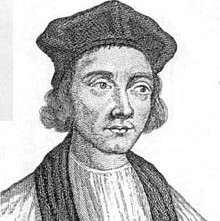
Cuthbert Tunstall
1531 – Birth of Roberto di Ridolfi, merchant, banker and conspirator, in Florence, Italy. In the 1570s, Ridolfi, who was a papal agent, acted as a go-between for the Spanish and the Duke of Norfolk, and was the man responsible for funding the rebellion which aimed to have a Northern Catholic rebellion and an invasion by Spanish forces under Philip of Spain. The plot became known as the Ridolfi Plot, and was uncovered before it was put into action.
1559 – Death of Ralph Baynes, Bishop of Coventry and Lichfield, during his imprisonment at the London home of Edmund Grindal, Bishop of London. He was buried in the church of St Dunstan-in-the-West, London. Baynes had been deprived of his bishopric and put into the care of Grindal in June 1559, due to his opposition to Elizabeth I's religious legislation.
1559 - Eighty-five year-old Cuthbert Tunstall, Bishop of Durham, died in prison at Lambeth Palace. He had had an amazing career, which spanned the reigns of Henry VIII, Edward VI and Mary I, but fell from grace in Elizabeth I’s reign after he refused to take the Oath of Supremacy and refused to participate in the consecration of Matthew Parker as Archbishop of Canterbury.
1600 – Death of William Hughes, Bishop of St Asaph and former chaplain to Thomas Howard, 4th Duke of Norfolk, at Diserth. He was buried in the cathedral choir. Hughes acted as patron to the Welsh poets William Cynwal, William Llŷn, and Siôn Tudur.

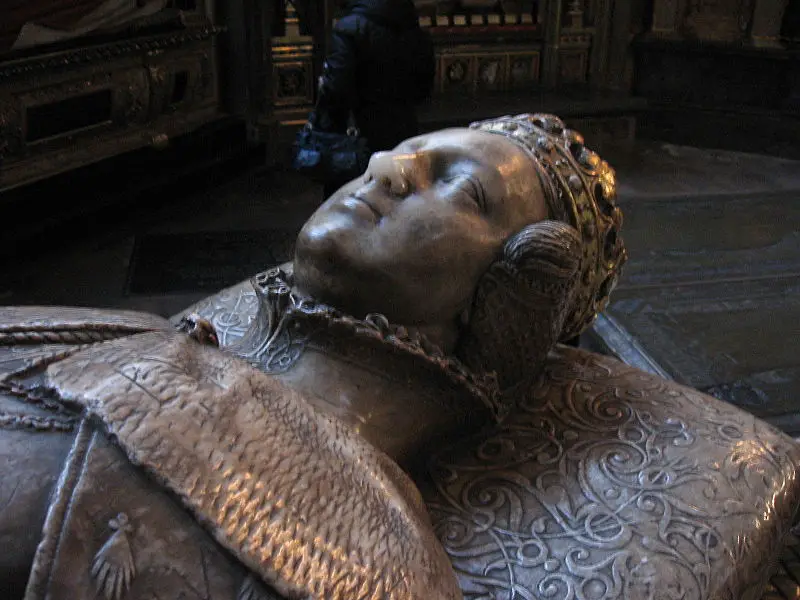
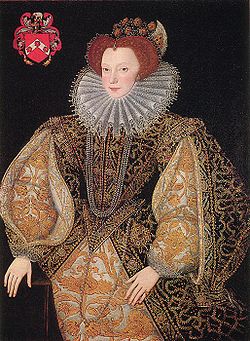
Leave a Reply